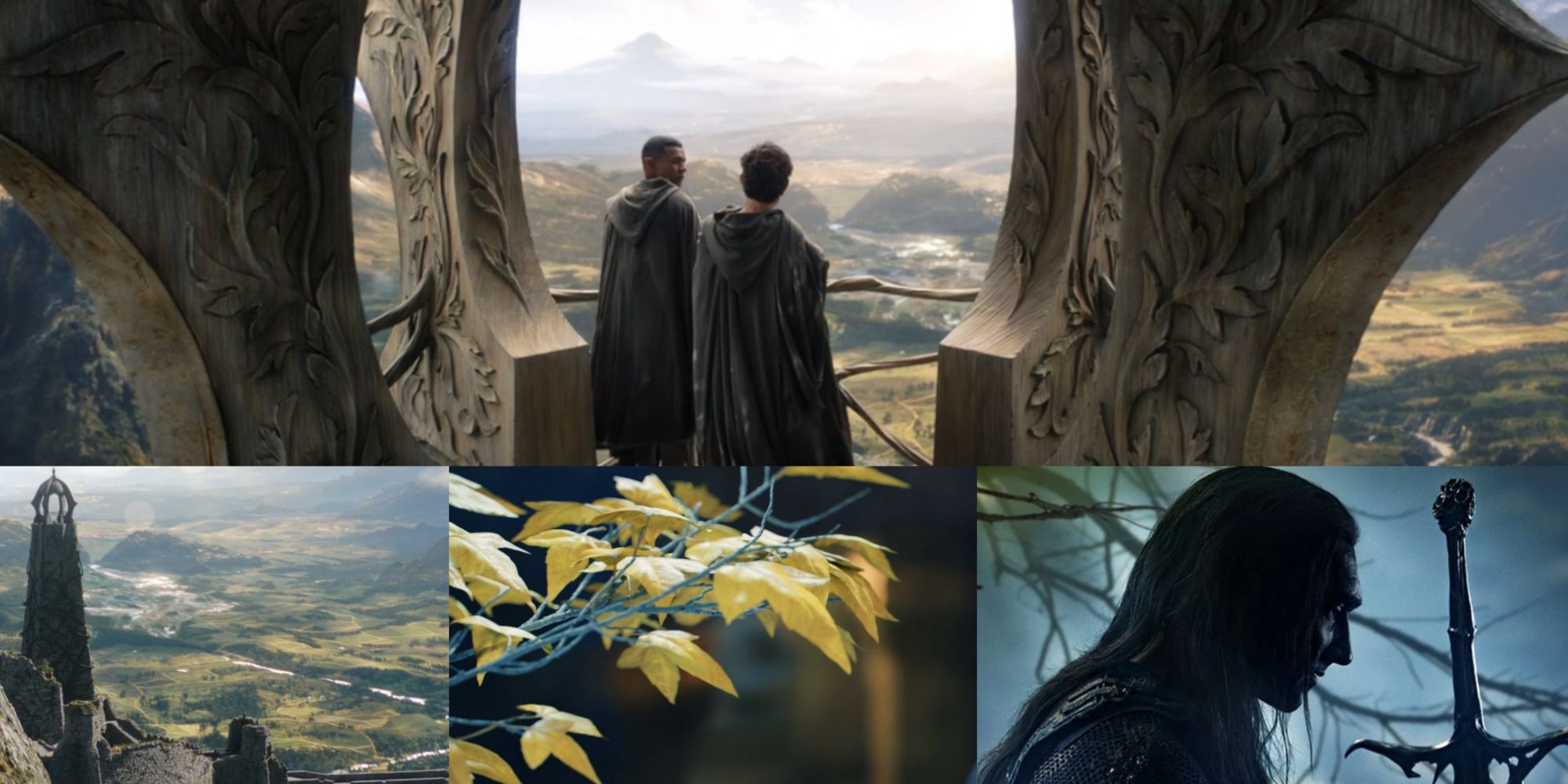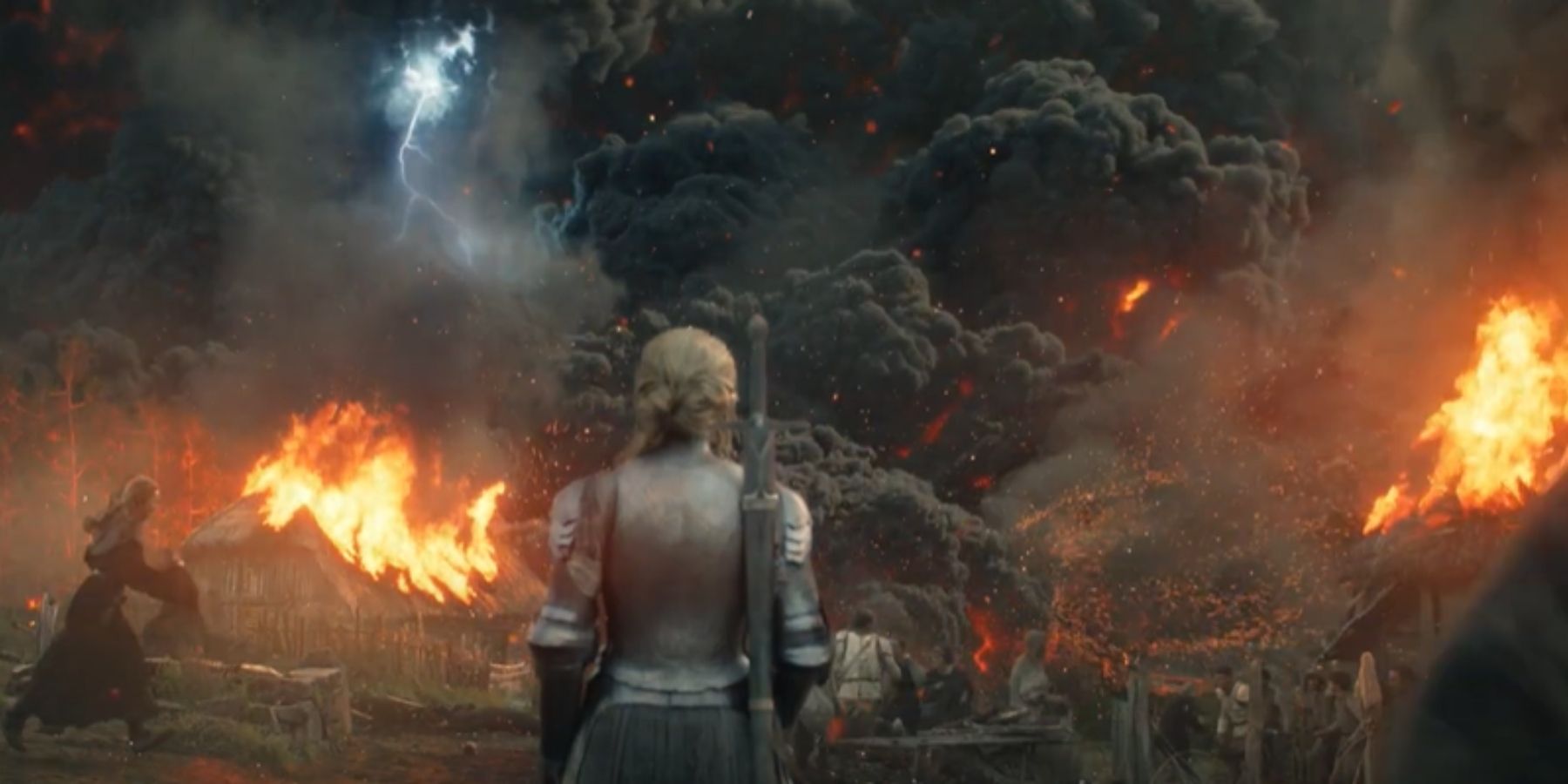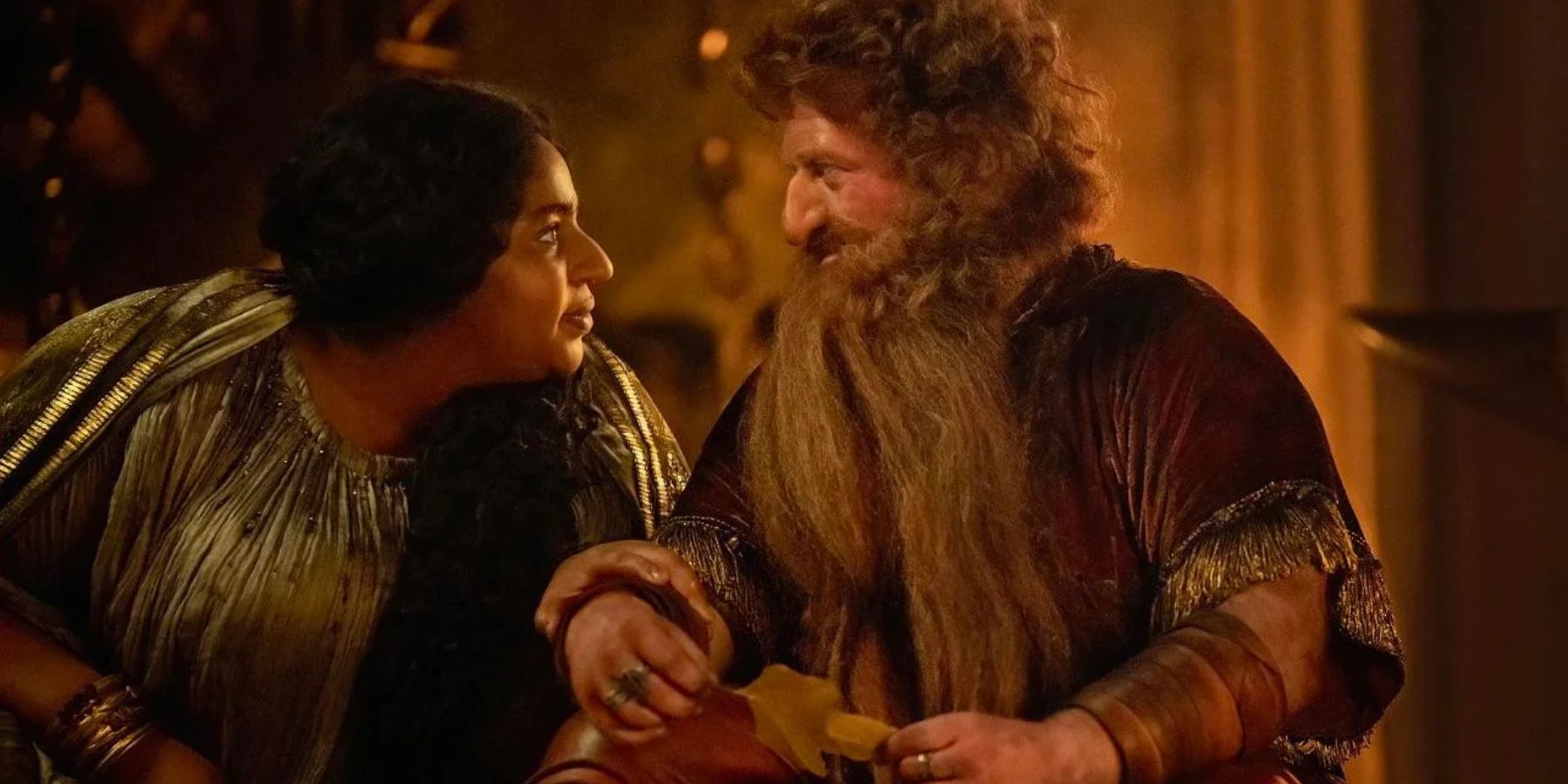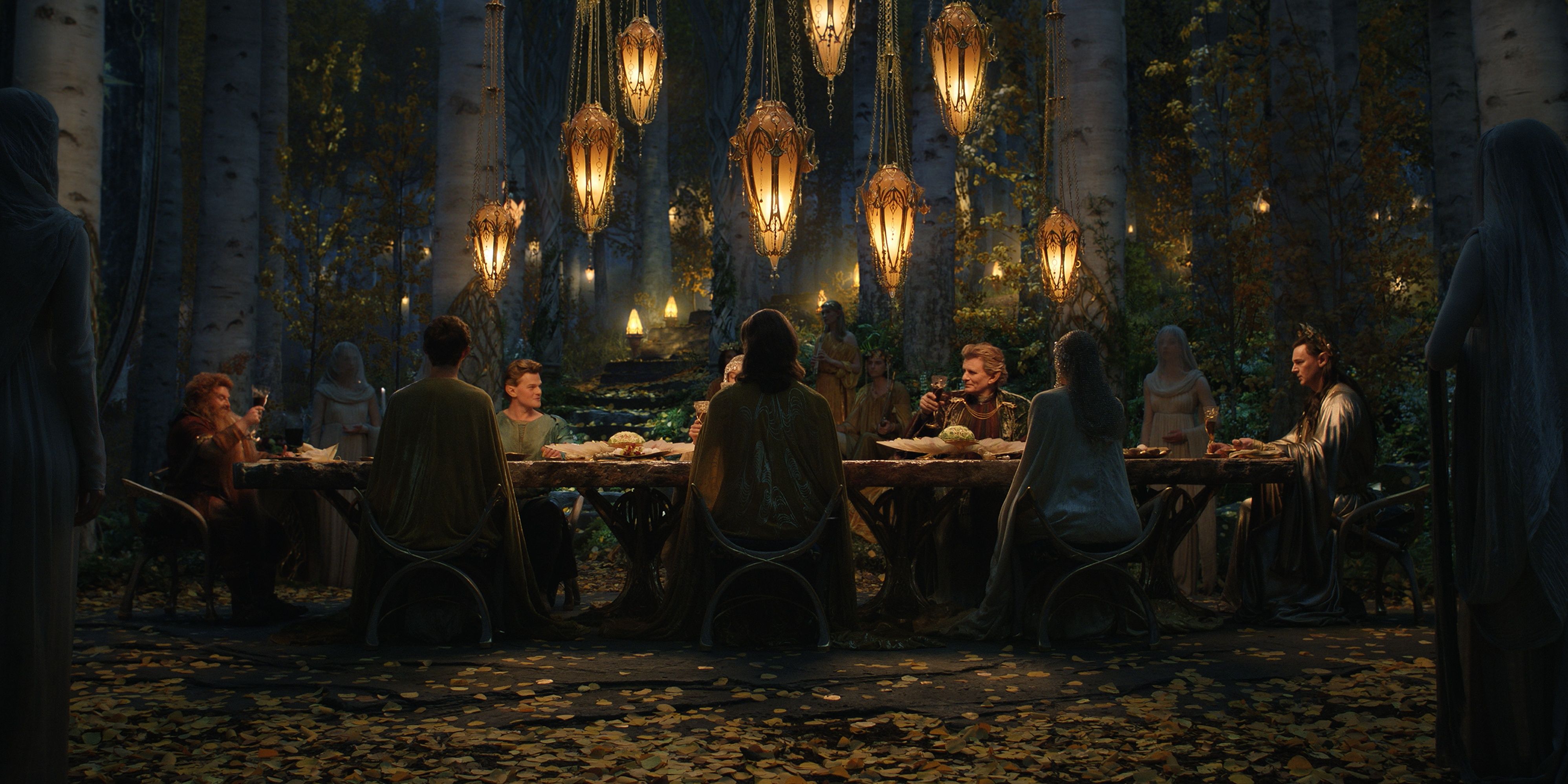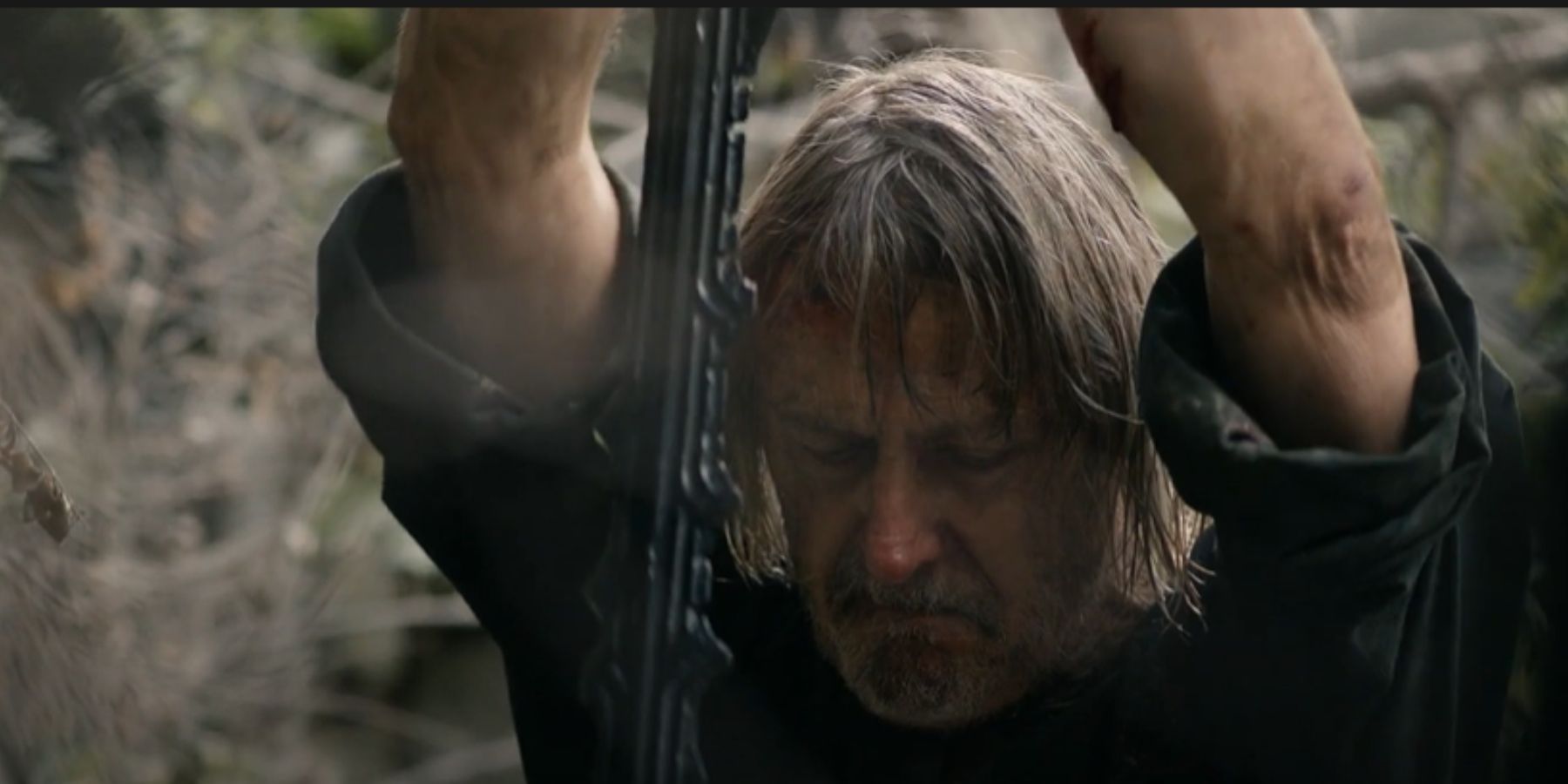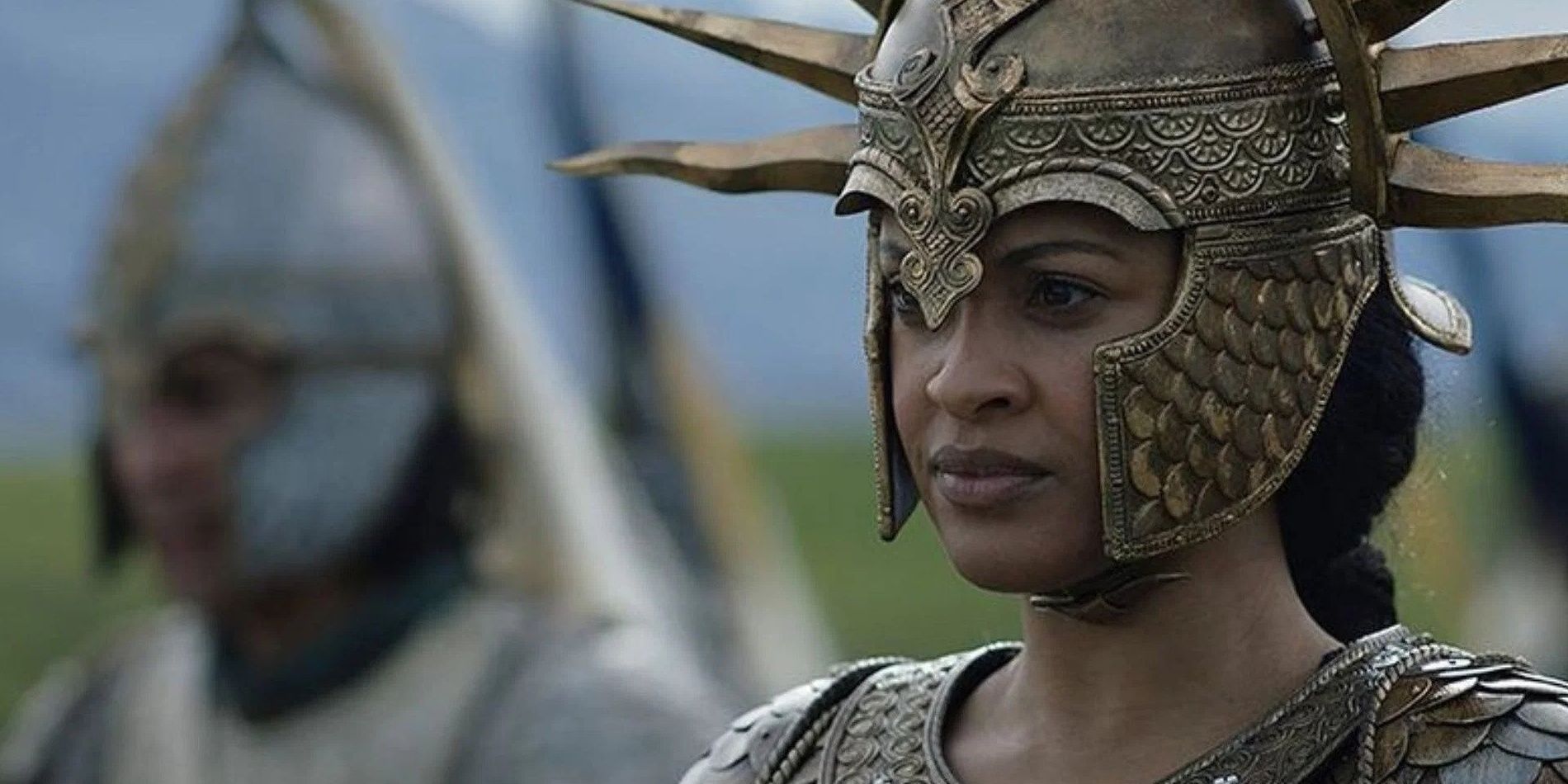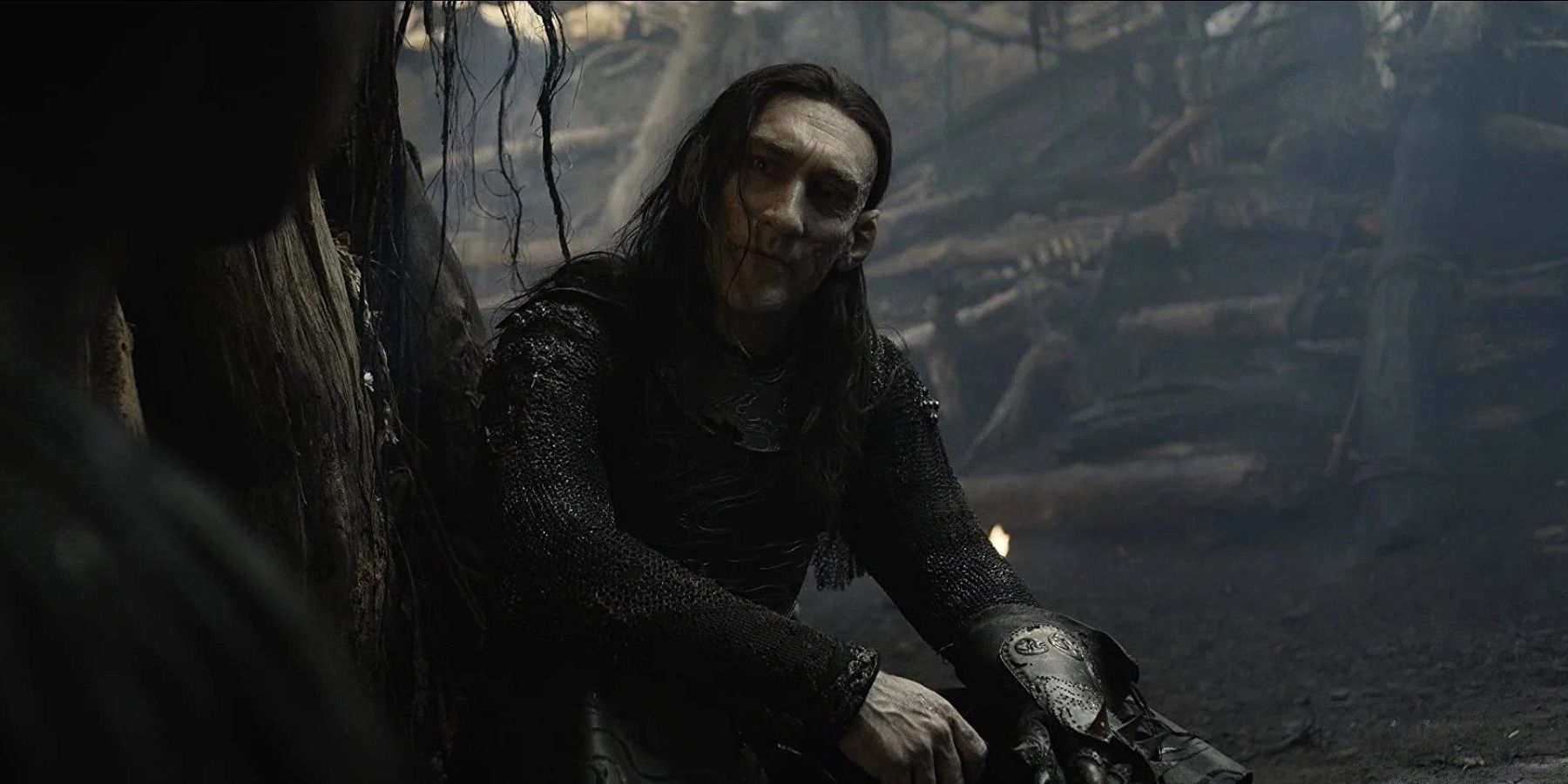Rings of Power has ramped up the intrigue. It has resolved some mysteries, deepened others, and given viewers some interesting glimpses into the history of Middle-Earth and the lore of The Lord of the Rings. The setting has shifted from Numenor back to the mainland of Middle-Earth to locations that both book readers and movie fans will recognize.
Everyone is on the move to a final meeting point, with each group of characters traveling in some way. The Harfoot migration southeast is now underway, the forces of Numenor have landed and are riding towards the Mountains of Shadow, and Adar marches on the Tower of Ostirith. All roads lead east to Mordor.
6 An Image of Mount Doom
Episode six ended with a cataclysmic volcanic eruption. This event resolved part of the mystery of how northern Mordor came to be a dark, rocky hellscape where even mold and lichen could barely grow. There were a few scenes in previous episodes where viewers got a scenic vista of Mount Orodruin, but with snowy peaks and verdant slopes as opposed to the black ash and rocky cliffs from the trilogy.
According to Tolkien, Sauron transformed Mordor to be more hospitable to his allies. That included blocking out sunlight and destroying local flora. He did this in a variety of ways, using magic and science, but he never really specified his methods other than hint at dark powers and malicious use of technology. Causing a volcanic eruption that would obliterate the surrounding plains and block out the sun would have been an ideal way to accomplish both.
5 The Vala Aulë
The Valar were subservient to their leader Manwe, and his master Eru Illuvatar, but they had their own projects and plans. Aulë was the Valar with a passion for creation and was the skilled smith and craftsman of his peers.
Aside from many famous inventions, like the vessels that hold the sun and the moon, Aulë created a race, the Dwarves, and they frequently refer to him as their maker. They took after their creator when it came to creativity and craftsmanship, and their different origins are partly what gave them the strength to resist the rings that Sauron gave them. Book readers know that when Durin refers to "Aulë's beard" in episode five, he's making a historical reference.
4 The Hidden Kingdom Of Lindon
Book readers know that all the Elven kingdoms of this period were hidden to some degree using various magical and natural means. To what degree depends on what kingdom, and Durin drops a hint about Lindon's actions being a "bit sudden," which is something book readers would pick up.
Doriath, an example of an Elven kingdom that's missing from the Rings of Power series, was protected by Melian's Girdle, a magical spell that Melian the Maia cast around her husband's realm. One of Melian's best friends, Galadriel, was not a Maia herself, but learned some of this magical technique and eventually would use it to protect her own realm of Lothlorien.
3 The Tools Of The Enemy
Episode six contains a scene in which Arondir tries and fails to smash the mysterious "blood hilt" that Theo found. This is a callback to the scene in The Fellowship Of The Ring during the Council Of Elrond when it's decided that the ring must be destroyed. The hilt is impervious to conventional damage, and Arondir breaks a hammer over it just like Gimli broke his axe over the ring.
The technology or spellcraft used to create the hilt is yet unknown, but book readers know that if it's connected to Sauron, it will also be connected to the rings. The use of human blood as an essential component is also a reference to the Cult of Sauron which utilized human sacrifices in its rituals.
2 The Royal Line And The First Queen
Some of the important moments that happen in Numenor feature Pharazon, the queen's advisor and cousin. Despite their differing positions, he seems to wield as much, if not more power, than she does. This seems to make him think he's entitled to the throne of Numenor rather than Miriel, and there's a history there he can use to push a claim to the throne if he wanted. His son actually seems to hint at this in episode five.
It used to be that a man could only hold the crown of Numenor until the sixth king, Tar-Aldarion, only had a daughter, Tar-Ancalimë. The laws were changed at that time to allow a woman to ascend the throne, although preference was still given to male heirs even if they were younger. It's a safe assumption that not everyone would have been happy with the change. Pharazon might be hoping to use this as a wedge against Miriel.
1 The Golden Bells Of Alfirin
It's strange that someone who intends to block out the sun and turn the local neighborhood into a pile of ash would be planting seeds. It makes more sense that Adar does this out of some kind of previous cultural prompting that he's entirely cut off from in the present.
It's an obscure reference, but these are alfirin seeds. Legolas talks about them during his first visit to Minas Tirith in The Return of the King. He sings about them, describing their flowers as golden bells, but it's a sad verse about Elves who fell in battle, destroyed like the flowers and fields.

